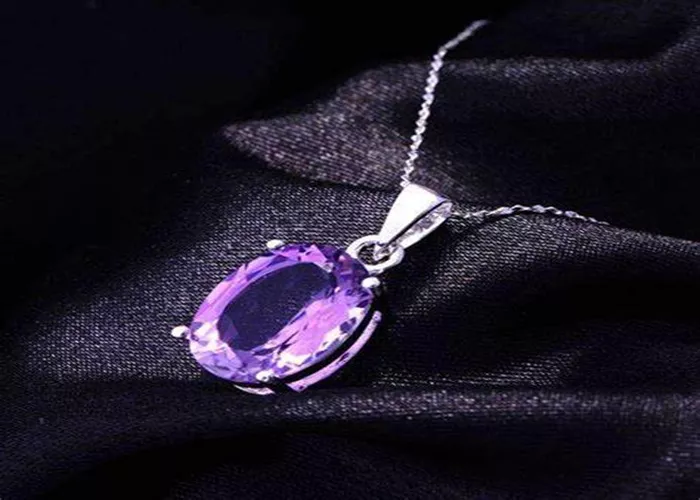Amethyst, with its stunning purple hues, is one of the most popular gemstones in the world. But how can you be sure that your amethyst is genuine? In this article, we’ll explore various methods to test the authenticity of your amethyst, helping you confidently determine whether it’s real or a clever imitation.
Understanding Amethyst
Before diving into testing methods, it’s essential to understand what amethyst is. Amethyst is a purple variety of quartz, formed from silicon dioxide and characterized by its vibrant violet to purple colors. This gemstone is highly valued for its beauty and is often used in jewelry, decorative items, and spiritual practices.
The Importance of Authenticity
Knowing whether your amethyst is real is crucial for several reasons. Genuine amethyst is not only more valuable but also carries a different meaning in metaphysical practices. Fake or treated stones may not possess the same energetic properties, making authenticity a key factor for collectors and users alike.
Visual Inspection: The First Step
Examine the Color
The first and most straightforward way to check if your amethyst is real is through visual inspection. Genuine amethyst typically exhibits a range of purple shades, from light lavender to deep violet. Look for:
Color Uniformity: Authentic amethyst often has color zoning, where different shades appear in the same stone. If the color is too uniform or overly vibrant, it might be a sign of a synthetic or treated stone.
Natural Variations: Real amethyst may have natural inclusions, which can add character to the stone. Check for tiny flaws or variations in color; these are often indicators of authenticity.
Assess the Clarity
While some amethyst can be quite clear, most genuine stones will exhibit minor inclusions. Look for:
Inclusions: Tiny bubbles or crystals inside the stone can indicate authenticity. If your amethyst is completely flawless, it could be synthetic or treated.
Surface Flaws: Authentic gemstones may have slight scratches or imperfections, unlike many synthetics, which tend to be polished to perfection.
The Light Test: Shedding Light on Authenticity
Use a Light Source
Another effective method for testing your amethyst is using a light source. Here’s how to conduct this test:
Translucency: Hold the stone up to a bright light. Real amethyst is translucent; light should pass through it, revealing a rich purple hue. If the stone appears opaque, it may not be genuine.
Color Change: Genuine amethyst can display a slight change in color under different lighting conditions. If you notice a significant color shift, it might be an indication that the stone is not real.
The Scratch Test: A Quick Assessment
Conduct a Scratch Test
A more hands-on approach to testing your amethyst is the scratch test. However, this method should be used with caution, as it can damage your stone. Here’s how to do it:
Use a Hard Object: Find a piece of quartz or glass. Gently try to scratch the surface of the amethyst. Genuine amethyst, with a hardness of 7 on the Mohs scale, should not scratch easily. If you see scratches, it may be a sign that your stone is not real.
Note: Always conduct this test in an inconspicuous area to avoid ruining the appearance of your stone.
The Thermal Test: Heat Sensitivity
Conduct a Thermal Test
Another method to determine if your amethyst is genuine involves temperature sensitivity. Here’s how to perform this test:
Heat the Stone: Carefully warm the amethyst with your hands. Genuine amethyst should warm up gradually. If the stone feels unusually hot or cold in comparison to other gemstones, it might not be authentic.
Cold Water Test: Dip the amethyst in cold water. Real gemstones tend to retain their temperature longer than synthetic stones. If the stone cools down too quickly, it might be a fake.
The UV Light Test: A Glow in the Dark
Test Under UV Light
Using ultraviolet (UV) light can reveal hidden secrets about your amethyst. Here’s what to look for:
Fluorescence: Many genuine amethysts will show a slight fluorescence under UV light, emitting a faint glow. If your amethyst does not glow or glows too brightly, it might be a synthetic or treated stone.
The Refractive Index Test: A Professional Approach
Measure the Refractive Index
For those with access to gemological tools, measuring the refractive index (RI) can provide conclusive results. Here’s how it works:
Use a Refractometer: A refractometer measures how light bends when it passes through a gemstone. The RI for amethyst typically ranges from 1.54 to 1.55. If your stone falls outside this range, it may not be real.
Note: This method is best suited for those with gemological training or access to a professional gemologist.
Consulting a Professional
Seek Expert Opinion
If you’re still unsure about your amethyst’s authenticity after conducting these tests, consider consulting a professional gemologist. They can provide a comprehensive analysis and verification using advanced techniques and equipment.
Caring for Your Amethyst
Proper Care for Your Amethyst
Whether your amethyst is real or synthetic, proper care is essential to maintain its beauty. Here are a few tips:
Cleaning: Use a mild soap solution and a soft cloth to clean your amethyst. Avoid harsh chemicals and ultrasonic cleaners, which can damage the stone.
Storage: Store your amethyst separately from other gemstones to prevent scratching. A soft pouch or a jewelry box with compartments works well.
Conclusion
Testing the authenticity of your amethyst can be a rewarding experience. By using a combination of visual inspections, light tests, and other methods outlined in this article, you can confidently determine whether your amethyst is genuine. Remember, if in doubt, consult a professional gemologist to ensure your beautiful gemstone is everything you believe it to be. With proper care and understanding, your amethyst can continue to shine brightly for years to come.
Related topic:
- What Are the Side Effects of Wearing Amethyst Stone
- Why Can’t You Wear Amethyst Every Day
- Why Are Amethysts so Cheap


